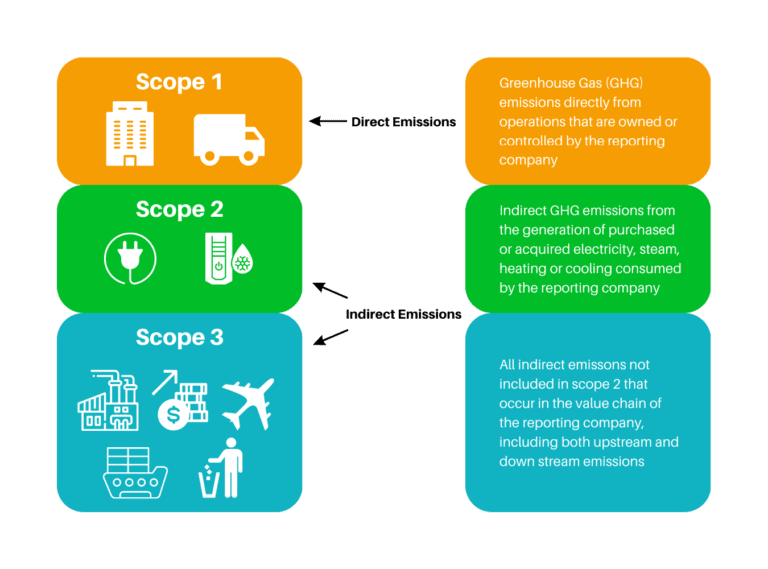
Net Zero, Carbon Neutral: What's the difference?
Are you asking yourself what’s the difference between Net Zero and Carbon Neutral?
The two terms are often used interchangeably but in truth, they are not the same.
Today, an increasing number of businesses make commitments to go carbon neutral, net-zero, or even climate positive.
But if we don’t know the difference between them, how can anyone achieve their goal?
Today we have a look at what Net Zero and Carbon Neutral mean and what the differences are.
What is Carbon Neutral?
According to the European Parliament, Carbon Neutrality means:
“Having a balance between emitting CO2 and absorbing CO2 from the atmosphere in carbon sinks.
Removing CO2 from the atmosphere and then storing it is known as carbon sequestration.”
Any system that absorbs more carbon than it emits is considered a carbon sink.
Soil, forests, and oceans are the primary natural carbon sinks.
Natural sinks are thought to remove between 9.5 and 11 Gt of CO2 annually.
In 2020, annual CO2 emissions were 36.0 Gigatons.
In terms of business, this means that any CO2 released into the atmosphere from a company’s activities is balanced by an equivalent amount being removed.

What is Net Zero?

The United Nations define Net Zero as:
“Cutting greenhouse gas emissions to as close to zero as possible, with any remaining emissions re-absorbed from the atmosphere, by oceans and forests for instance.”
Net Zero also includes more than CO2 emissions, (unless specified as Net Zero Carbon).
Net Zero refers to the whole amount of greenhouse gas emissions, not just CO2.
These gas emissions include methane, nitrous oxide, fluorinated gases and more.
CO2 makes up around 75% of emissions followed by methane at around 15%.
At COP21, many governments made the commitment to become Net Zero by 2050.
What’s the Difference Between Carbon Neutral and Net Zero?
The most apparent difference between carbon neutral and Net Zero is the amount of change each makes.
Carbon neutrality keeps the status quo.
A company can easily become carbon neutral simply by planting enough trees or purchasing enough offsets.
There is no need for the company to make any changes to its practices, culture or emissions.
Offsetting simply means it uses some profit to offset its emissions.
This isn’t ideal and could potentially raise accusations of greenwashing, especially if the company makes sustainability claims.
Net Zero (and one step further, Climate Positivity) means that a company is on a journey to reducing its emissions to the minimum possible.
Also, it will have a plan in place to reduce its 3 scopes of emissions and preferably a footprint report to measure the starting point and progress.
Finally, whatever emissions remain can then be offset preferably using nature-based solutions that have other impacts such as social.
What are the Three Scopes of Emissions?
When a company analyses the emissions that make up its footprint, there are three scopes of emissions to consider.
These three scopes are defined by the most widely used international accounting tool, the Green House Gas Protocol.
Scope 1 covers direct emissions from owned or controlled sources.
Following this, Scope 2 covers indirect emissions from the generation of purchased electricity, steam, heating and cooling consumed by the reporting company.
Finally, Scope 3 includes all other indirect emissions that occur in a company’s value chain.

Carbon Neutral or Net Zero: Which is better?
Ask any expert on the environment what is needed first and they will say behaviour change.
Whether it is consumer behaviour or business practice, we need to transition to more sustainable behaviour.
We cannot go on producing more CO2 than our planet can absorb and just planting more trees simply isn’t a sustainable answer.
Imagine the CO2 in the environment is water in a bath.
Offsetting is simply removing the water from one part of the bath and pouring it into another.
That doesn’t actually reduce the water in the bath.
Net Zero on the other hand means a business has a plan, a map, so to speak, of its sustainable journey ahead.
With a footprint report, a business can begin the journey to net zero.

Nature-based offsetting of a footprint whilst on the journey to reduce emissions will eventually lead to a business being climate positive.
This means removing far more CO2 from the environment than is being generated and is what all businesses should strive for.
If you own a business and want to take your next step (and the ones after), Play It Green offers the solutions you need.
From Net Zero support, to signposting, from policies and templates to marketing and narrative support, we help you on your journey.
With full transparency, science-based evidence and a collaborative approach we help you to reduce risk and increase positive change.
Don’t delay – sign up today and begin a journey that can only benefit your business.





